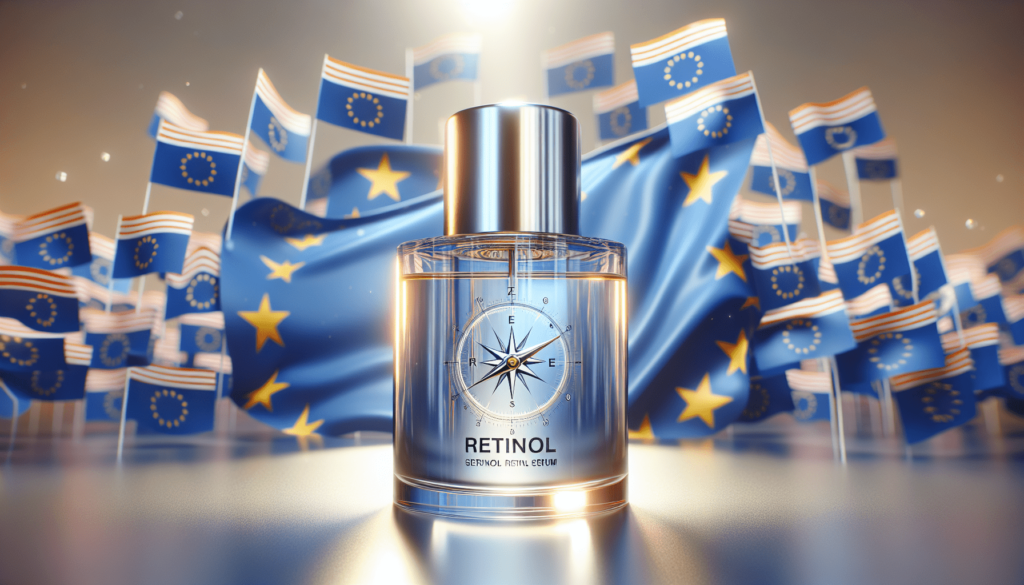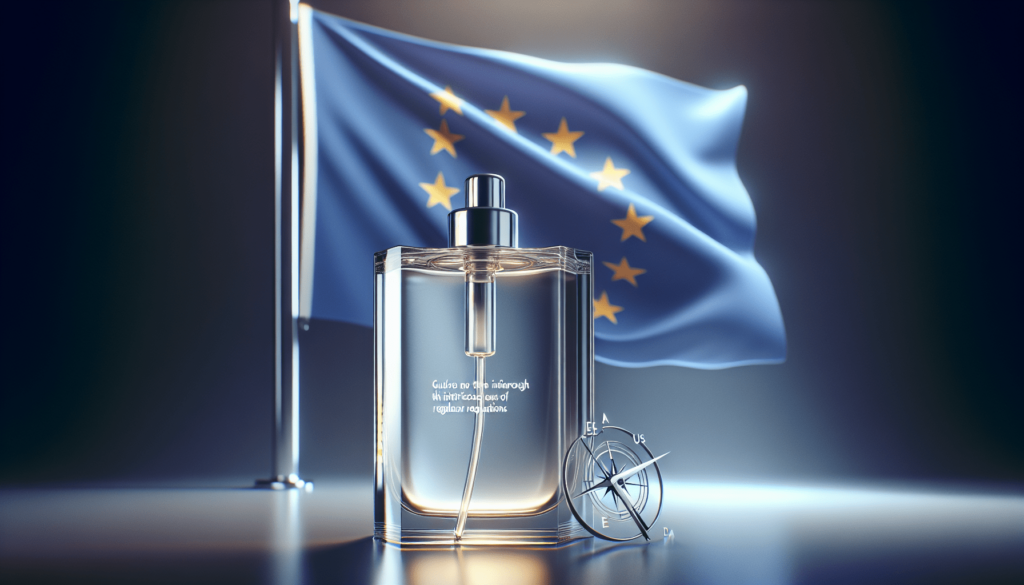
Have you ever wondered how new regulations could reshape a routine as personal as skincare? Recently, the European Union has turned its gaze toward retinol, a beloved ingredient in the beauty world, and set forth new rules that are already causing ripples across the industry. If retinol is part of your skincare ritual — or if you’re considering incorporating it — understanding these changes might be crucial. Let’s navigate this evolving landscape together, so you’re informed and ready to adapt your regimen while harnessing the benefits retinol offers.
The EU’s New Retinol Rules: What They Mean for Skincare
Retinol is often praised for its anti-aging properties, touted as a transformative player on your skin‘s team. With the EU’s updated regulations, both brands and consumers are adjusting to a new set of rules. This adjustment, while challenging, is aimed at ensuring that retinol is used safely and effectively, aligning with broader concerns around health and safety.

What Are the New EU Retinol Regulations?
Let’s get into the specifics of these upcoming changes. The European Union has laid down strict guidelines on the use of retinol, not just for the sake of change, but with an eye on health and safety.
Regulatory Limits
The new regulations establish maximum allowed concentrations for retinol in various products: 0.05% for body lotions and 0.3% for facial serums and creams. Moreover, these products must carry mandatory safety labels that warn users about increased UV sensitivity and potential risks, nudging you towards more informed decisions about your skincare.
Compliance Timelines
These rules don’t apply immediately, allowing you and the beauty brands you love some time to adjust. For new products, the compliance deadline is set for November 2025, while existing products have until May 2027 to align with the guidelines. The phased approach affords both beauty brands and you, as a consumer, the opportunity to transition smoothly.
Why Were These Regulations Introduced?
Understanding why these rules were introduced helps highlight their necessity and intent. The EU has a longstanding dedication to stringent safety standards in cosmetics, focusing on protecting consumers like you.
Health Concerns
Retinol at high concentrations has been linked to skin irritation, peeling, and even long-term issues like Vitamin A toxicity. Regular overuse can escalate health risks, including conditions such as bone fragility. These concerns underline the need for regulatory oversight and the importance of balancing retinol’s benefits with safety precautions.
EU’s Focus on Consumer Protection
The EU’s focus remains steadfast on protecting consumers, which calls for strict safety guidelines that govern cosmetic products. Dermatologists, such as Dr. Jane Smith, emphasize that while retinol’s benefits are well-documented, its responsible use is crucial to avoid harm. This aligns with the EU’s mission to ensure that the skincare products you depend on are safe and effective.
How Will These Rules Impact Beauty Brands?
These changes ripple through the beauty industry, presenting both challenges and opportunities. Understanding how brands are likely to respond to these regulations can help you see beyond the label to what really matters in skincare.
Product Reformulation
To adhere to the new limits, brands must reformulate their products, which may mean lowering retinol concentrations. Despite this, many companies might pair retinol with hydrating or soothing ingredients to maintain product efficacy. Retinol’s partnership with such ingredients can enhance your skincare experience, minimizing potential irritation and optimizing results.
Compliance Challenges
Compliance doesn’t come cheap. Brands face increased costs related to testing, re-labeling, and marketing their reformulated products. While larger companies might manage these expenses, smaller brands could feel strained by the necessary allocation of resources.
Opportunities for Innovation
On the bright side, where there are challenges, there are also opportunities for innovation. Expect to see developments in alternative ingredients, like bio-retinol, as well as enhanced delivery systems, such as encapsulated retinol, which aim to improve efficacy with lower concentrations.
What Does This Mean for Consumers?
Knowing how these regulations affect you directly is central to adapting your skincare routine confidently. While these adjustments might seem daunting, they bring with them advancements in safety and options.
Safer Products
The move towards lower retinol concentrations means reduced risks of irritation and long-term damage. As the health and safety of consumers are prioritized, you can feel more assured about the products you choose.
Fewer High-Strength Options
As over-the-counter retinol products adapt, prescription options may become the only way to access stronger retinoids. This shift might steer you towards consulting skincare professionals more frequently to tailor your regimen effectively.
Increased Awareness
The newly mandatory safety labels are there to educate, making you more informed about proper retinol use and the importance of sun protection. Moving forward, pairing retinol with hydrating products can help minimize dryness or irritation, making for an interesting adjustment to your daily routine.

Exploring Retinol Alternatives
With these changes, exploring alternatives to retinol may enhance your skincare journey. Either in response to sensitivity or simply as a preference, these options are valuable in maintaining healthy skin.
Bakuchiol
Bakuchiol stands out as a plant-based alternative to retinol, providing anti-aging benefits without the irritation that retinol can sometimes cause. Its gentler nature makes it a viable choice for sensitive skin.
Peptides
Peptides are another option, known for boosting collagen production and improving skin elasticity. They offer a natural way to address signs of aging and can fit smoothly into your routine.
Niacinamide
If redness and uneven texture are your concerns, niacinamide is a fantastic alternative. It strengthens the skin barrier while balancing oil and reducing redness, promising a more resilient complexion over time.
Bio-Retinol
For those seeking a natural formulation, bio-retinol offers a similar effect to retinol with a much gentler profile, targeting signs of aging effectively without the associated risks.
Product Recommendations
To get you started, here are some top product picks for retinol alternatives:
- Biossance Squalane + Phyto-Retinol Serum (Bakuchiol)
- The Ordinary Matrixyl 10% (Peptides)
FAQs About Retinol and the New Rules
To help you navigate these changes with confidence, here are answers to common questions.
Q1: Can I still use retinol in my skincare routine?
Yes, you absolutely can! However, you may find that products contain lower concentrations, capped at 0.3% for safe and effective use.
Q2: What are the risks of retinol?
Common side effects include dryness, redness, and increased sensitivity to UV rays. Ensuring proper use and sun protection can mitigate these risks.
Q3: Will prescription retinoids be affected?
The new regulations apply solely to over-the-counter products, meaning prescription retinoids remain unchanged and available as before.
Q4: What are the best retinol alternatives?
For sensitive skin, bakuchiol, peptides, and niacinamide offer excellent results, allowing you to tailor your routine without missing out on anti-aging benefits.
Adapting Your Skincare Routine to the New Rules
Adjusting your routine might feel like a daunting task, but there’s plenty of practical advice to make the transition seamless.
Gradual Transition
Integrating compliant retinol products step-by-step, alongside hydrating serums, helps maintain your skin’s balance and results.
Protect Your Skin
Given retinol’s tendency to increase UV sensitivity, using sunscreen daily is a necessity to shield your skin from potential sun damage.
Customize Based on Skin Type
For sensitive skin, bakuchiol or niacinamide can provide gentle care. If your skin tolerates retinol well, pairing it with moisturizers can offer balanced results.

Quick Routine Guide
Here’s a straightforward guide to help organize your skincare routine:
| Morning | Evening |
|---|---|
| Cleanser | Double Cleanse |
| Antioxidant Serum | Retinol Serum |
| Moisturizer | Moisturizer |
| SPF | Night Cream |
The Future of Retinol in Skincare
The evolving landscape of skincare, sparked by these regulations, brings innovation to the forefront.
Innovation
Brands are exploring encapsulated retinol formulations to enhance its delivery and efficacy, providing hopeful outlooks for effective and gentle use.
Global Trends
With Europe taking this step, it’s worth pondering if similar regulations might someday be adopted by other regions, such as the US or Asia.
Sustainability
A growing focus on eco-friendly and cruelty-free alternatives continues to steer future developments in skincare, appealing to a more conscientious consumer market.
In conclusion, the EU’s retinol regulations underscore a commitment to safety and informed choices in skincare. Embracing these changes means not only enjoying the benefits of retinol more responsibly but also exploring exciting new avenues in skincare that cater to your personal needs. The world of skincare is an ever-evolving landscape full of promising innovation and choices tailored to ensure the health and beauty of your skin. As you adjust to these changes, may you feel empowered in your knowledge and the choices you make for your skin’s well-being.









1 thought on “Navigating the EU’s Retinol Regulations in Skincare”